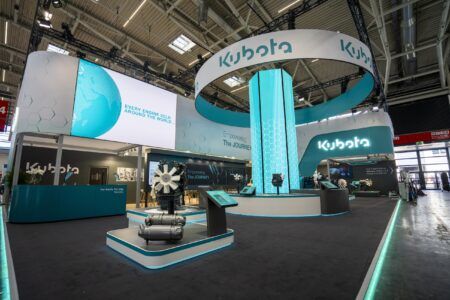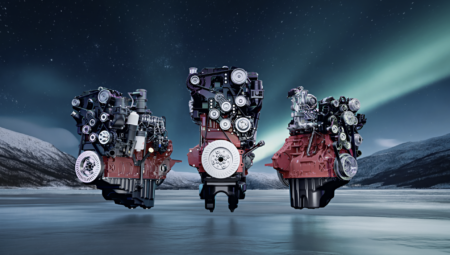MAN Engines showcases its new MAN E3872 series for the first time at next week’s Biogas Convention & Trade Fair, 7-9 December in Nuremberg. It is designed as a four-stroke spark-ignition gas engine with a displacement of 29.6 litres, a bore of 138mm and a stroke of 165mm.
With the 735 kWmech it produces, MAN Engines is now able to supply gas engines with a significantly higher power output. At the same time, the engine manufacturer from Nuremberg, Germany, is remaining true to its philosophy of achieving high power density. Thus, the new MAN E3872 series is based on the proven and compact platform of the 25.8-litre MAN E3262.
“MAN Engines is synonymous with robust engines that take up very little space. The impressive output of 735 kWmech from a 12-cylinder engine is a customer-oriented solution with undeniable added value in terms of serviceability, maintenance and operation costs,” says Reiner Roessner, head of sales at MAN Engines.
To achieve the significantly increased output of 735 kW, the engineers at MAN Engines have incorporated numerous conceptual innovations. The basis for this is the existing crankcase of the MAN E3262, which has been in use since 2010. This means that empirical data from many millions of operating hours are available. Given the fact that the bore has been increased from 132 mm to 138 mm and the stroke from 157 mm to 165 mm, steps were taken at the same time to increase the robustness of the crankcase.
Other fundamental differences relate primarily to the changes made to the turbo charger concept, the combustion process and the cylinder heads. The upshot of this extensive development work is that the mechanical effective efficiency rate in the natural gas variant at 50 Hz has been increased to 44.0%. “With such a high degree of efficiency, the profitability of a unit can be significantly increased,” says Roessner.
The new single turbo charger concept has a significant impact on the high efficiency of the innovative E3872 gas engine. By fine-tuning the inlet and outlet guide units (diffuser and nozzle ring), the turbo charger can be operated exactly at the compressor and turbine’s optimal efficiency, which reduces the charge-cycle work. Other modifications made internally at MAN to boost efficiency include the use of control times based on the Atkinson principle, which is rather unusual for stationary engines.
What’s more, the piston bowl design of the new steel pistons, help to accelerate combustion and thus increase efficiency. The pre-chamber spark plugs, which have been specifically adapted to the combustion chamber, also have a positive effect on combustion acceleration, as they cause the gas to ignite at several spots within the newly designed combustion chamber. In addition, combustion stability in low-NOx operation has been improved to an even greater extent.
Its high degree of efficiency makes the engine particularly suitable for applications where the focus is on the production of electricity and additional generation of heat. This opens up a wide range of potential applications in the agricultural and municipal sectors, in hotels, hospitals and industrial plants. Its high degree of mechanical efficiency and thus in electricity production has a correspondingly positive effect on the operator’s energy balance. As an additional customer benefit the E3872 is using a hydraulic valve lash adjuster, which makes regular checking and adjustment of the valve train unnecessary. Machine operators will benefit from the elimination of routine maintenance intervals and the resulting costs.
A variant that operates at a speed of 1800 rpm (60 Hz) is also in the pipeline for certain markets. As part of the process of converting the stationary natural gas engine portfolio to a state of “hydrogen readiness”, the new E3872 engine will also be designed to run with hydrogen admixture (H2) if operated with natural gas.
The natural gas variant of the turbocharged E3872 engine achieves nitrogen oxide values of 250 mg/Nm3 NOx (5% O2), whereas the biogas variant achieves 500 mg/Nm3NOx (5% O2). The CHP or genset manufacturer could easily achieve future nitrogen oxide limits of 100 mg/Nm3 NOx (5% O2) by using an exhaust gas aftertreatment system (Selective Catalytic Reduction category).
A scaled model of the newly developed MAN E3872 will be shown at MAN Engines’ stand B74 in Hall 9 at the Biogas Convention & Trade Fair.





